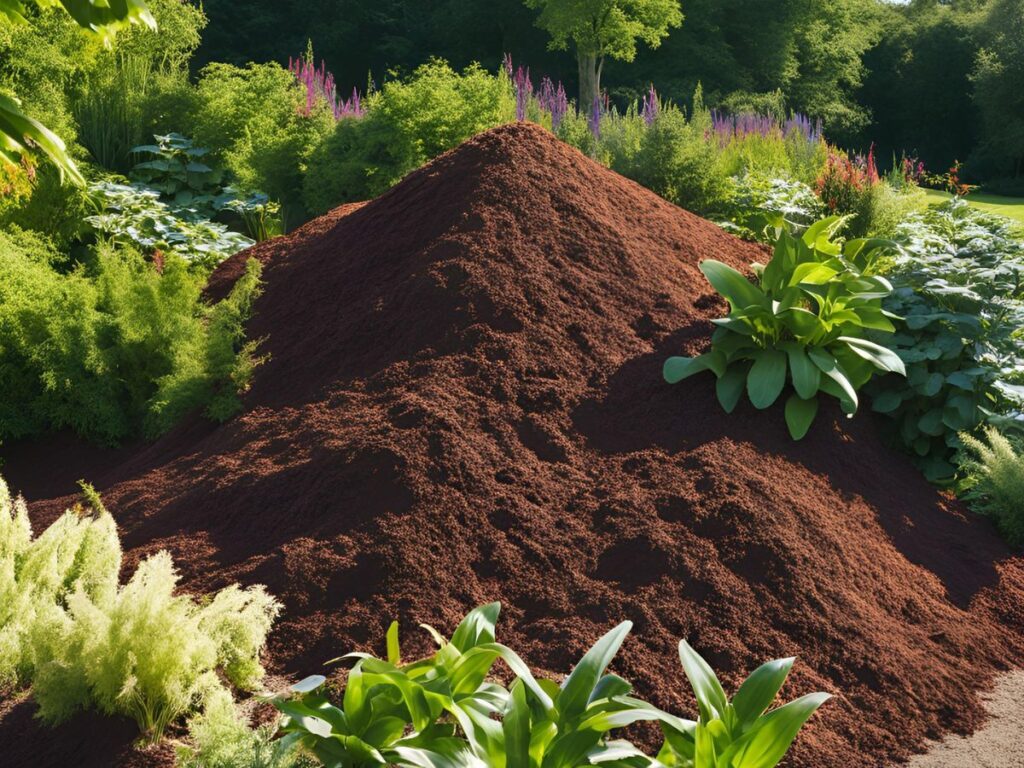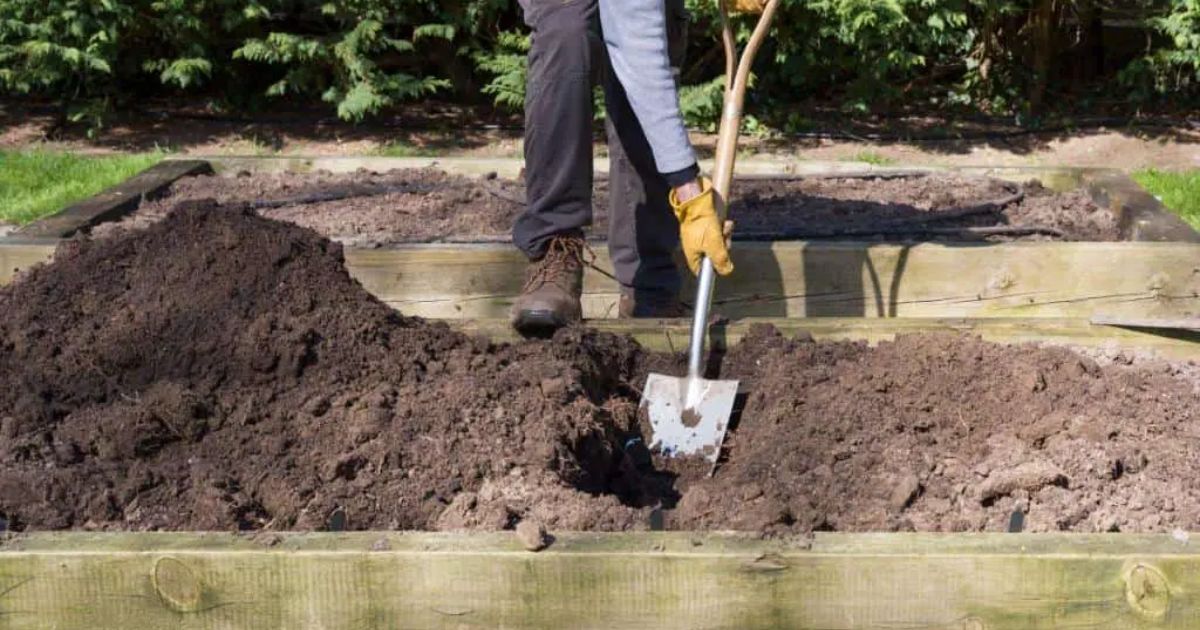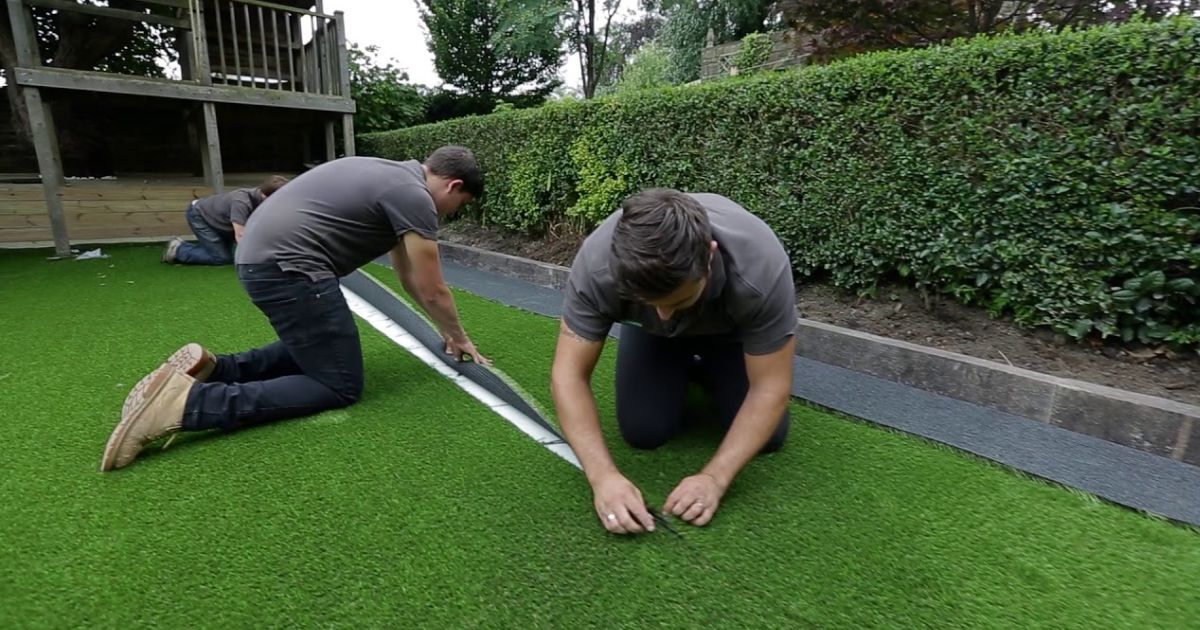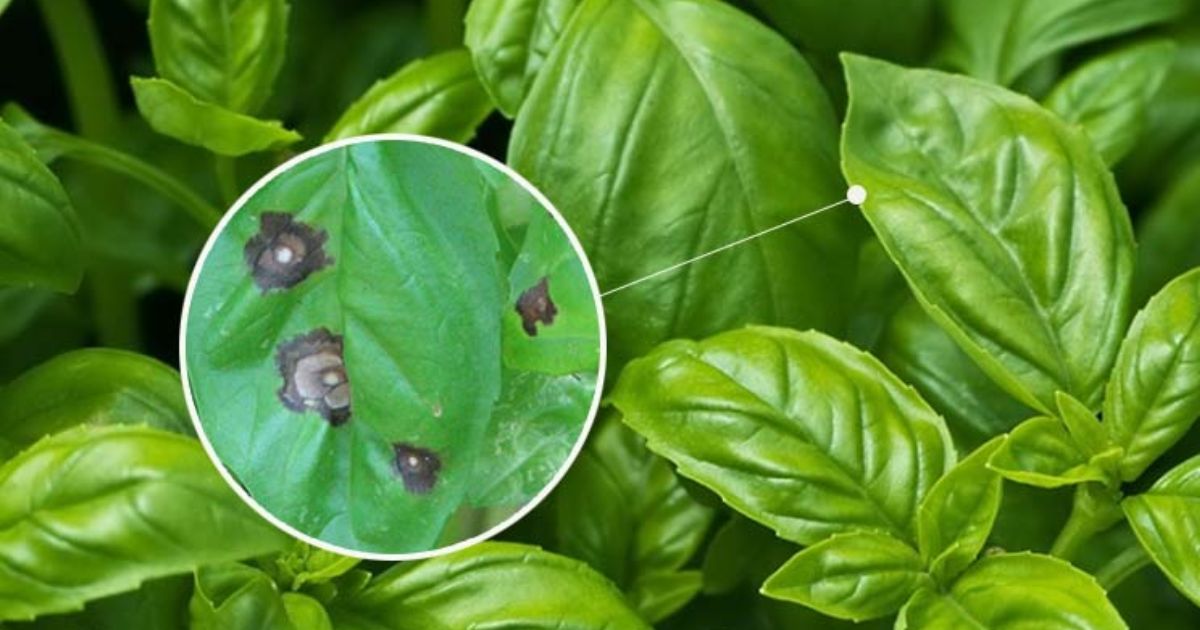One of the simplest and most efficient methods to improve the health of your plants and soil. When you apply mulch organic, you’re not just adding an aesthetic layer to your garden; you’re providing essential benefits that help promote plant growth and enhance soil quality. Organic mulch is created from natural resources like wood chips, straw, leaves, and grass clippings, is a barrier that keeps moisture in, inhibits weed growth, and enriches the soil with nutrients as it breaks down. Whether you’re tending to a vegetable garden, flower bed, or landscaping, understanding how to apply mulch organic correctly can significantly impact your garden’s overall health.
This guide will walk you through applying organic mulch for healthier plants and soil. From selecting the right type of mulch to the best application techniques, you’ll learn how to create a thriving, low-maintenance garden that flourishes year after year. By the end, you’ll understand the key steps to applying organic mulch and how to reap its many rewards.
What is Mulch Organic?
Mulch organic is a natural, biodegradable material utilized in gardens and landscapes to cover the soil’s surface. It is made from various organic materials that break down over time, enriching the soil and offering multiple benefits to your plants. Unlike synthetic mulches, which can have long-lasting environmental impacts, organic mulches are eco-friendly and work harmoniously with nature. Some common examples of organic mulch include wood chips, straw, grass clippings, leaves, and compost. These materials help retain moisture, regulate soil temperature, and enhance your garden’s general well-being.
The benefits of using mulch organic are numerous and significant for both the plants and the soil:
- Retains Moisture in the Soil: By acting as a barrier, organic mulch keeps water from evaporating too quickly. This helps moisten the soil, especially during hot, dry weather.
- Suppresses Weed Growth: Mulch blocks sunlight from reaching weed seeds, helping prevent weeds from sprouting. This encourages a healthier garden and lessens the need for chemical herbicides.
- Improves Soil Structure and Fertility: organic mulch for trees decomposes, enhancing the soil’s structure and supplying beneficial minerals and fertility. The decomposition process also encourages beneficial microorganisms and earthworms, which further enrich the soil.
- Reduces Soil Erosion: By shielding the soil’s surface from strong winds and rain, mulch helps stop soil erosion. It also helps reduce runoff, allowing water to soak in more effectively.
- Promotes a Healthy Root System: Organic mulch’s insulating effect keeps soil temperatures more stable, preventing extreme temperature fluctuations. This promotes strong, healthy root growth, which is essential for plant vitality.
Examples of Organic Mulch Materials:
- Wood Chips: Wood chips provide a long-lasting mulch that adds nutrients to the soil as they break down, making them ideal for use around trees and shrubs.
- Straw: Straw is a lightweight mulch perfect for vegetable gardens and flower beds. It helps retain moisture and suppress weeds without compacting the soil.
- Grass Clippings: Easily accessible, grass clippings are rich in nitrogen and decompose quickly, enriching the soil with nutrients. Just be sure to use them in thin layers to prevent matting.
- Leaves: Fallen leaves, especially when shredded, make an excellent mulch. They are rich in organic matter and improve soil fertility as they break down.
- Compost: Compost can be used as mulch, providing nutrients and improving soil texture and microbial activity.
By incorporating organic mulch into your garden care routine, you’ll enhance your outdoor space’s aesthetic and functional aspects while supporting a sustainable, healthy environment for your plants to thrive.
Why Mulch Organic is Essential for Plants and Soil
Mulch organic is more than not only a beautiful addition to your yard, but it is essential to keeping a healthy, thriving ecosystem for plants and soil. From moisture retention to soil enrichment, alternative for mulch provides a number of advantages that assist guarantee your garden flourishes year-round. Here are some of the key reasons why organic mulch is essential for both your plants and soil:
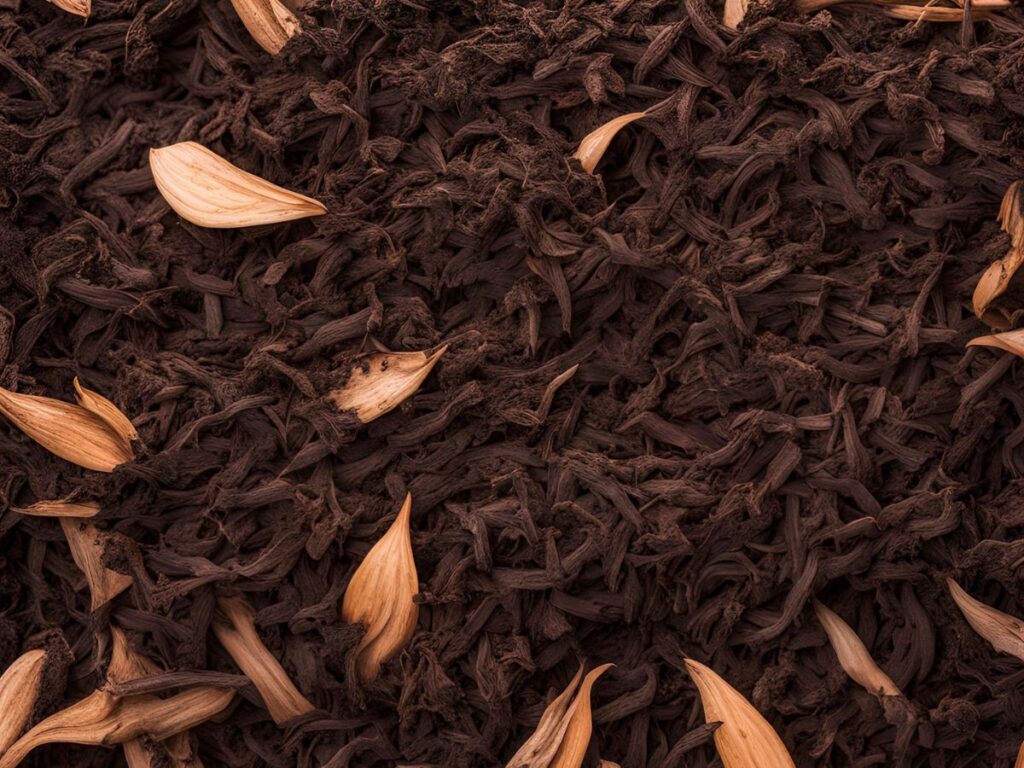
Moisture Retention
One of the most significant benefits of using the capacity of mulch for organic vegetable garden to hold onto soil moisture. Organic mulch acts as a barrier that helps minimize water evaporation to maintain the soil’s constant moisture content for extended periods. This is particularly valuable during hot, dry weather, where water may quickly evaporate from the surface. By helping the soil retain water, Organic mulch saves time and money by reducing the need for frequent watering. This also ensures that your plants receive the hydration they need, especially during drought.
Weed Control
Your plants may face competition from weeds for sunshine, water, and nutrients, so controlling their growth is essential for a healthy garden. Alternative to mulch around house helps prevent weeds from taking over by blocking sunlight from reaching weed seeds. As the mulch layer settles over the soil, it creates a physical barrier that smothers weeds, preventing them from sprouting and establishing themselves. This reduces the need for chemical herbicides, providing a natural and eco-friendly method of weed control. Over time, the mulch decomposes, further adding to its ability to suppress weeds and protect your plants from competition.
Soil Enrichment
The decomposition of organic mulch nourishes the soil by adding valuable nutrients. The organic matter in mulch breaks down into humus, which improves soil structure and fertility. This natural process increases the availability of vital nutrients, including potassium, phosphorus, and nitrogen, which are crucial for plant growth. Additionally, natural mulching enhances the soil’s ability to retain moisture and improves its overall texture, making it more conducive to healthy root development. The nutrients released from decomposed mulch also support the growth of beneficial microbes, further enhancing the soil ecosystem.
Temperature Regulation
Mulch also helps regulate soil temperature, which is vital for plant health. During hot summer, organic mulch acts as an insulator, keeping the soil cooler by blocking the sun’s intense rays from directly hitting the soil surface. This helps prevent the soil from overheating, which can stress plants and damage their roots. Conversely, mulch provides insulation in colder weather that helps warm the soil, protecting plant roots from frost damage. This ability to regulate soil temperature helps create a more stable environment for plant growth throughout the year.
Encourages Beneficial Organisms
Another significant advantage of mulch organic is that it attracts beneficial organisms, such as earthworms, insects, and microorganisms, which are vital in improving soil health. As the organic mulch breaks down, it provides a rich habitat and food source for these beneficial creatures. Earthworms, for instance, aerate the soil by tunnelling through it, which improves soil structure and drainage. Other organisms help decompose organic matter, breaking it down into nutrients that plants can easily absorb. By encouraging diverse beneficial organisms, organic mulch contributes to a more vibrant and healthy soil ecosystem.
Organic garden straw is essential for maintaining healthy plants and soil. Its benefits range from improving moisture retention and controlling weeds to enriching the soil with nutrients, regulating temperature, and fostering a thriving ecosystem of beneficial organisms. As part of your gardening regimen, you can use organic mulch to create a more sustainable, low-maintenance garden that promotes long-term plant health and soil fertility.
Step-by-Step Guide on How to Apply Mulch Organic
Applying mulch organic correctly is essential for maximizing its benefits. Whether you’re a seasoned gardener or a beginner, this step-by-step guide will help you use your mulch properly to enhance soil health and promote thriving plants.
Step 1: Prepare the Soil
The first step in applying mulch organic is preparing the soil to ensure that the mulch will be effective in promoting plant health.
- Clear Weeds and Debris: Begin by removing any existing weeds, rocks, or other debris from the area you intend to mulch. Your plants may face competition from weeds for nutrients and water, so eliminating them is essential to giving your mulch a clean foundation.
- Loosen the Soil: Use a garden fork or rake to loosen the soil slightly. This step ensures better penetration of the mulch It makes it easier for the soil to absorb rainfall. Loosening the soil helps the mulch integrate more seamlessly into the environment and encourages healthier plant root growth.
Step 2: Choose the Right Mulch Organic
Choosing the correct type of mulch for organic garden is crucial for your plants’ success. Organic mulch at home depot Different types of mulch offer various benefits, Therefore, it’s crucial to choose one that meets your needs.
- Select the Best Mulch Type for Your Plants: Consider your garden’s specific needs. For example, wood chips are ideal for trees and shrubs because they break down slowly and provide long-lasting coverage. Straw or hay is perfect for vegetable gardens, as it decomposes quickly and enriches the soil with nutrients. Leaves can be used in flower beds and around perennials, while compost is excellent for enriching the soil and promoting microbial activity.
- Consider Climate and Plant Needs: The climate and specific plant types will also influence your choice of mulch. For example, in hot climates, you may prefer mulch that retains moisture well, like wood chips or shredded bark. On the other hand, straw might be a better option in cooler areas, as it helps insulate the soil. banana flower side effects
Step 3: Apply the Mulch
Once you’ve selected the right mulch, it’s time to apply it to your garden. Follow these tips for an even, effective layer:
- Spread Mulch Evenly: Using a shovel or rake, spread the mulch evenly across the soil. The ideal depth for mulch is typically 2-4 inches, depending on the material and the type of plants you’re working with. Thicker layers may be appropriate for plants needing more moisture retention or areas with poor soil quality.
- Leave Space Around Plant Stems: When applying mulch, make sure to leave a small gap around the stems or trunks of plants and trees. This prevents the mulch from coming into direct contact with the stems, which can cause rot and encourage pests. Avoid piling the mulch against tree trunks, or plant stems, leading to fungal diseases or other issues.
Step 4: Water the Mulch
After applying the mulch, it’s important to water it thoroughly to help it settle into place.
- Water Thoroughly: Use a garden hose or watering can to water the mulch evenly, ensuring it’s damp but not soaked. Watering helps the mulch settle into the soil and aids in breaking down long lasting mulch. It also promotes moisture retention for your plants.
- Regular Watering During Establishment: Regular watering may be required in the first few weeks after applying mulch, especially if you live in a dry climate. The mulch will help retain moisture, but the initial watering helps the mulch settle and kick-starts its decomposing process.
Step 5: Maintain and Replenish
Regular maintenance is essential to ensure your mulch continues to provide benefits.
- Check the Mulch Periodically: Over time, your organic mulch will decompose and break down. Periodically check the mulch to ensure it maintains the desired depth. If the mulch has decomposed significantly or has thinned out, it’s time to replenish it.
- Replenish and Refresh: As the mulch decomposes, it’s essential to refresh the layer to maintain effectiveness. Adding fresh mulch annually or as needed will continue to provide the benefits of moisture retention, weed suppression, and soil enrichment.
These few steps will allow you to apply mulch organic effectively, ensuring your plants receive the protection and nourishment they need to thrive. Whether creating a vegetable garden, landscaping your yard or improving soil health around trees, organic mulch is essential to keeping a lovely and healthy landscape.
Common Mistakes to Avoid When Applying Mulch Organic
Applying organic mulch is a simple yet highly beneficial gardening practice, but it can lead to unintended consequences if not done correctly. To ensure your mulch enhances plant health and soil quality, avoid these common mistakes that can hinder its effectiveness.
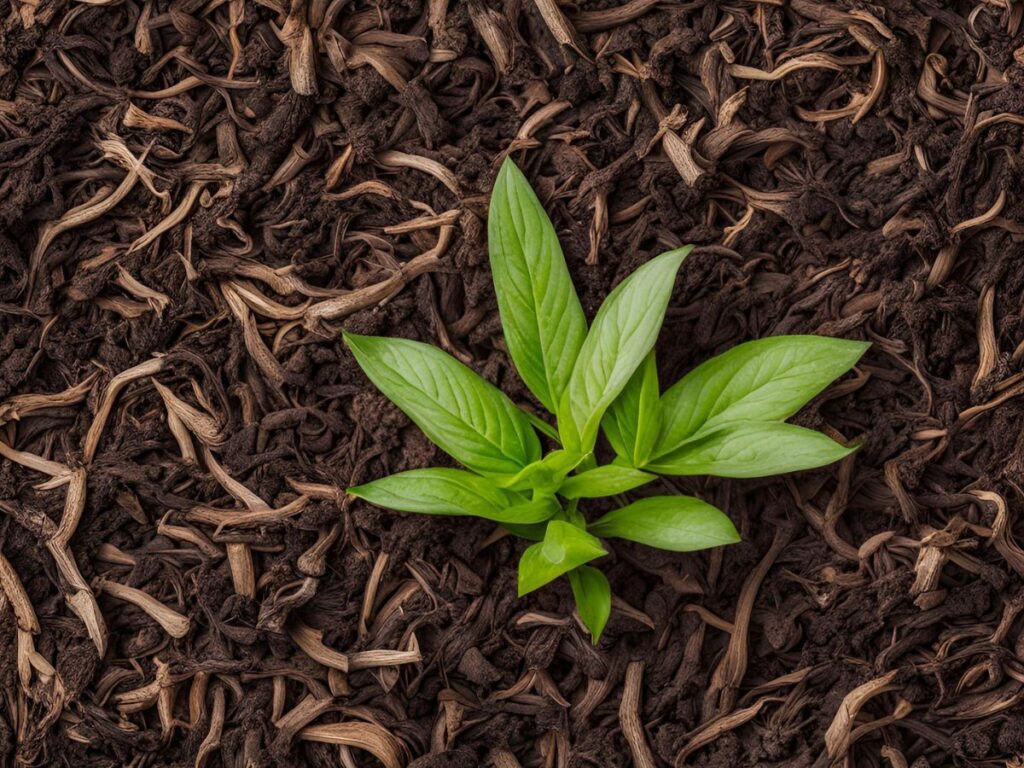
1. Too Much Mulch
One of the most common mistakes when applying mulch is using a layer that’s too thick. While mulch benefits moisture retention, weed suppression, and temperature regulation, applying too much can suffocate plant roots.
- Why It’s a Problem: Excessive mulch creates a barrier that prevents oxygen from reaching plant roots. This can lead to root rot, poor growth, and even plant death. Mulch piled too high around the base of plants can also trap moisture against the stems, causing them to decay.
- Solution: Apply mulch in a layer that is about 2-4 inches deep. This provides adequate moisture retention and weed control coverage without hindering root health. If the mulch is too thick in certain areas, it can be thinned out to avoid suffocating plants.
2. Not Leaving Space Around Plants
Another mistake is applying mulch too close to plants’ stems or trunks, which can cause a range of issues for plant health.
- Why It’s a Problem: When mulch is piled directly around the base of plants or trees, it creates an environment that is too moist, leading to potential fungal diseases, rot, and insect infestations. The mulch can also trap excess moisture against the plant stems, damaging them and promoting the growth of pathogens.
- Solution: Always leave a small gap—about 1-2 inches—between the tree trunks or plant stems and the mulch. This allows for proper airflow around the base and lowers the chance of illness and decay. Keeping mulch away from the plant’s crown also promotes healthier growth.
3. Using Inappropriate Mulch for Specific Plants
Not all mulches are created equal, and choosing the wrong mulch for your plants can negatively affect their growth.
- Why It’s a Problem: Certain mulches, such as pine needles, are more acidic and may not be suitable for plants that prefer alkaline or neutral soils. For example, pine needles can be beneficial for acid-loving plants like blueberries but can harm plants that thrive in neutral or alkaline soils, such as tomatoes or peppers.
- Solution: Always consider your plants’ needs before selecting mulch. For instance, if you have acid-loving plants, opt for pine bark or wood chips, which can enhance the acidic soil. On the other hand, if you’re working with plants that prefer more neutral soil, go for straw or shredded leaves. Make sure you match your mulch choice to your plant’s specific requirements.
4. Ignoring Regular Maintenance
While applying mulch is essential, neglecting regular maintenance can lead to problems like fungal growth, nutrient depletion, and reduced mulch effectiveness.
- Why It’s a Problem: Organic mulch breaks down and decomposes over time. If not replenished or maintained, it can compact and become too dense, leading to poor moisture penetration, a lack of oxygen to plant roots, and the potential for fungal diseases. Additionally, old mulch may attract pests or become a breeding ground for harmful fungi like powdery mildew or mould.
- Solution: Regularly check your mulch for indications of deterioration and add more as necessary to keep the proper depth. Turning the mulch periodically (mainly if it decomposes quickly) can help prevent compaction and ensure it continues to break down properly. Refreshing the mulch helps maintain its benefits while avoiding problems associated with decaying, dense mulch.
Applying organic mulch correctly is crucial for enhancing your garden’s health. By avoiding these common mistakes—such as applying too much mulch, not leaving space around plants, using the wrong type of mulch, and neglecting regular maintenance—you can ensure that your garden thrives and your plants receive all the benefits that organic mulch has to offer. With proper care and attention, organic mulch will provide lasting protection and nourishment for your garden. tomatoes splitting
Tips for Choosing the Best Mulch Organic
The environment, the look of your garden, and the health of your plants can all be greatly impacted by your choice of organic mulch. There are a lot of mulch options available, so it’s important to think about a number of variables before selecting one. The following tips will help you choose the best organic mulch for your particular requirements:

1. Consider Your Local Climate
Understanding your local climate is one of the most critical factors in choosing the right organic mulch. The weather conditions in your area will determine which type of mulch is most suitable for your garden.
- Dry Climates: If you live in an area with hot, dry summers, mulch that retains moisture and provides insulation is crucial. For arid locations, wood chips and shredded bark are excellent choices since they reduce the soil’s water evaporation, which keeps your plants hydrated and protecting them from extreme heat. These mulches break down slowly, making them long-lasting and effective in conserving moisture.
- Humid Climates: A lighter, more breathable mulch is ideal in regions with high humidity and frequent rainfall. Straw or hay works well in these conditions because it decomposes faster and doesn’t retain excessive dampness, which may cause root rot or fungus growth. Additionally, it maintains a steady soil temperature, protecting plants from sudden fluctuations.
Consider the climate of your region to choose a mulch that works with nature to protect your plants rather than against it.
2. Match Mulch to Your Plants’ Needs
Not all plants are created equal, and different types of mulch can benefit specific plant species in unique ways. Understanding your plants’ needs will help you choose the best organic mulch for each garden area.
- Acid-Loving Plants: Some plants, such as blueberries, azaleas, and cranberries, thrive in acidic soil. For these types of plants, slightly acidic mulches, like pine bark or pine needles, can help maintain or slightly lower the soil’s pH. These mulches also provide excellent moisture retention and slow decomposition.
- Vegetable Gardens: Choose a mulch that promotes soil health and allows for easy decomposition. Straw, grass clippings, and leaves are ideal for vegetable gardens because they break down quickly, enriching the soil with organic matter and nutrients. These mulches also help control weeds and maintain moisture content, which is essential for the proper growth of vegetables.
- Trees and Shrubs: A heavier mulch like wood chips or shredded bark is often the best option for trees and shrubs. These mulches provide long-lasting coverage that helps protect the roots from temperature fluctuations and dry spells. They also discourage weed growth and encourage healthy root systems.
Matching mulch to your plants’ needs ensures they receive the right nutrients, protection, and support for optimal growth.
3. Sustainability
When choosing mulch, it’s essential to consider the environmental impact of your decision. Opting for locally sourced, organic mulch is a more sustainable choice that supports local ecosystems and reduces your ecological footprint.
- Locally Sourced Mulch: Using locally sourced mulch, such as leaf litter, wood chips, or grass clippings, lessens the carbon footprint brought on by long-distance material transportation. This practice also supports local businesses and reduces waste, as many mulch materials come from natural sources or recycled yard waste. For example, contacting your local arborist for wood chips from tree pruning can be a sustainable option that benefits both your garden and the community.
- Recycled Materials: To support sustainability, consider using recycled or repurposed mulch materials, such as compost or shredded newspaper. These materials can enrich your soil and help reduce waste in landfills. Recycled mulch options are also beneficial for plants because they often contain a rich mix of organic particles that enriches the soil with important nutrients.
By choosing sustainable mulch options, In addition to enhancing your garden’s health, you can also help the earth.
Conclusion
Organic mulch is a simple yet powerful tool for enhancing plant health, improving soil quality, and promoting a successful garden. From its moisture-retaining benefits and ability to suppress weeds to its role in enriching the soil as it decomposes, organic mulch serves as a natural and sustainable solution for maintaining a thriving garden. By selecting the right mulch based on your climate, plant needs, and sustainability goals, you can provide your garden with the support it needs to flourish season after season.
If you haven’t yet incorporated organic mulch into your gardening routine, now is the perfect time to start. Apply mulch to your garden beds, observe its positive impact on your plants, and share the benefits you notice with fellow gardeners. Whether you’re a beginner or a seasoned gardener, using organic mulch will help create a healthier, more resilient garden that thrives year-round. Happy gardening!
FAQs
What is organic mulch?
Organic mulch is made from natural, biodegradable materials such as wood chips, straw, grass clippings, leaves, or compost. As it breaks down over time, it enhances the soil’s structure and provides beneficial nutrients, providing benefits like moisture retention and weed control.
How thick should I apply organic mulch?
A mulch layer of 2-4 inches is ideal for most garden beds. This depth provides sufficient coverage for moisture retention, weed suppression, and temperature regulation without suffocating plant roots. To prevent rot, avoid piling mulch directly around plant stems or tree trunks.
How often should I replace or replenish organic mulch?
Organic mulch naturally breaks down over time, so you’ll need to replenish it every year or two to maintain its benefits. Check your mulch periodically to see if it has decomposed or thinned out. To preserve the intended layer, apply a new layer depth if the mulch appears compacted or excessively broken down.
Can I make my organic mulch at home?
Yes! You can create organic mulch by composting yard waste like grass clippings, leaves, and plant trimmings. Shredding or chopping the material before applying it to your garden can help it break down more efficiently. Homemade mulch is a great way to recycle yard waste and enrich soil.

